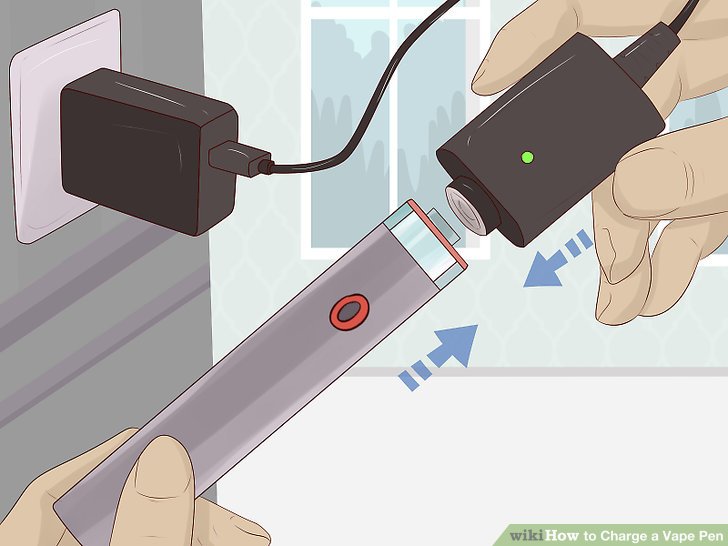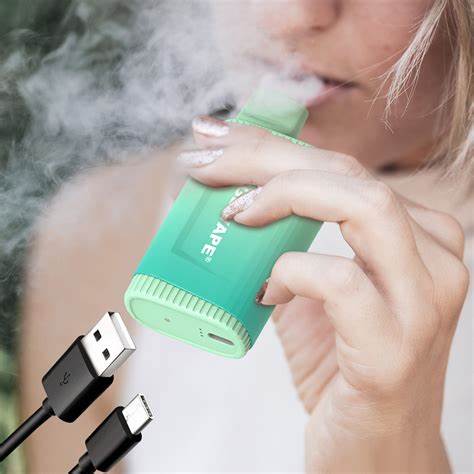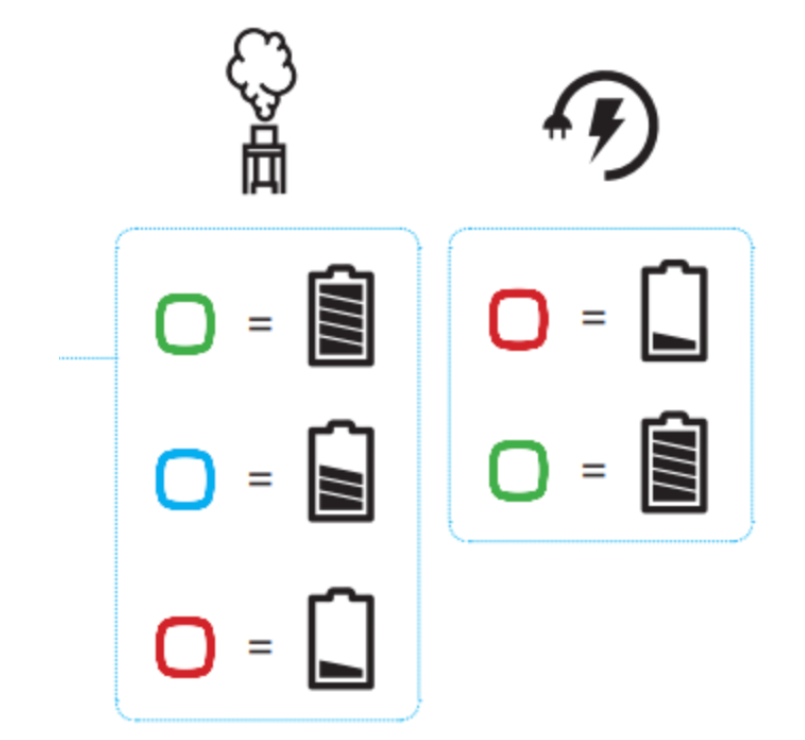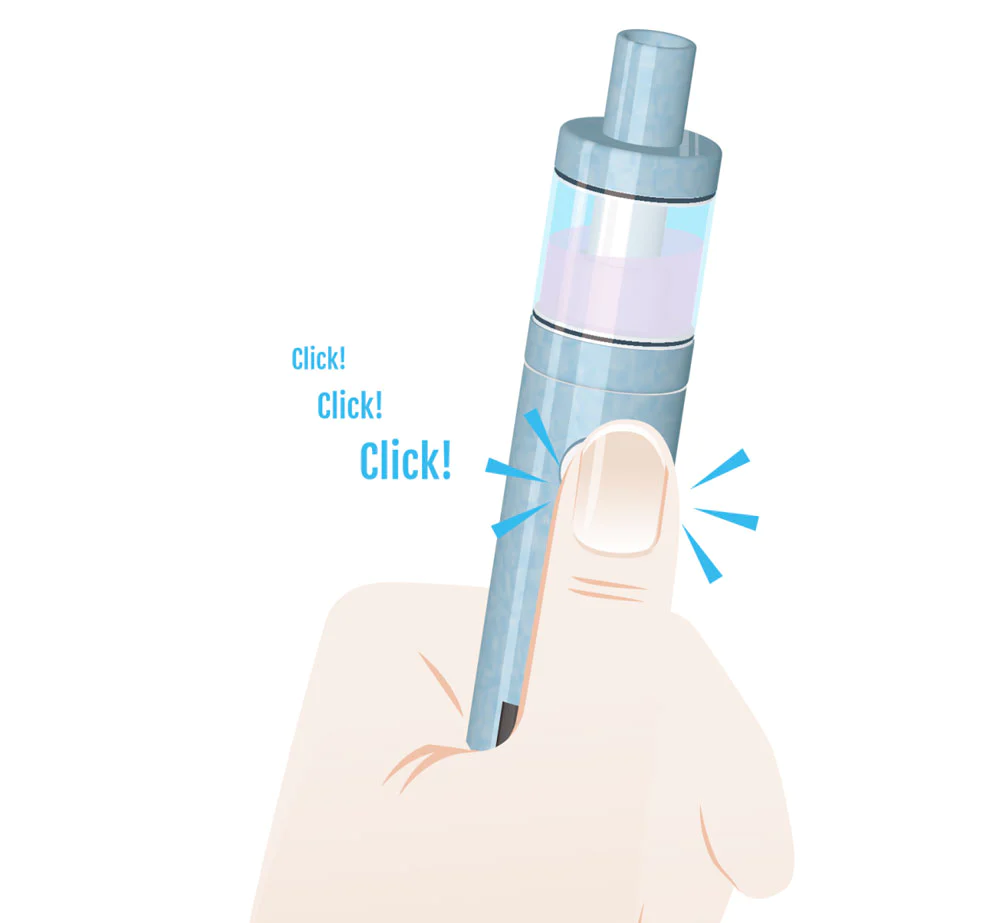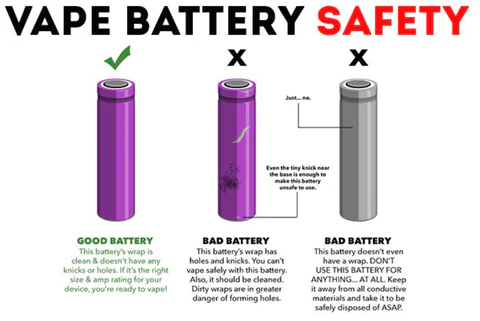Contents
- 1 Introduction to Disposable Vapes
- 2 Understanding Disposable Vape Batteries
- 3 How Long Does it Take to Charge a Disposable Vape?
- 4 Tips for Efficiently Charging Disposable Vapes
- 5 Signs That Your Disposable Vape is Fully Charged
- 6 Troubleshooting Charging Issues with Disposable Vapes
- 7 Extending Battery Life and Maximizing Charge Efficiency
- 8 Conclusion
Introduction to Disposable Vapes
Disposable vapes represent a significant innovation in the realm of vaping, catering to the needs of both novice and seasoned enthusiasts alike. These compact, pre-filled vaping devices offer unparalleled convenience and simplicity, revolutionizing the vaping experience. In this comprehensive exploration, we delve into the intricacies of disposable vapes, shedding light on their functionality, charging mechanisms, and optimal usage practices.
Defined by their single-use nature, disposable vapes encapsulate the essence of portability and ease of use. Unlike traditional vaping devices that necessitate refillable tanks or replaceable coils, disposable vapes arrive pre-filled with e-liquid and require no maintenance or assembly. This characteristic makes them particularly appealing to individuals seeking hassle-free alternatives to traditional smoking or cumbersome vaping setups.
The surge in popularity of disposable vapes can be attributed to several factors, including their sleek design, diverse flavor options, and on-the-go functionality. With their pocket-friendly dimensions and discreet profiles, disposable vapes offer unparalleled portability, allowing users to enjoy their favorite flavors without drawing attention to themselves. Moreover, the expansive array of flavor profiles available caters to a spectrum of preferences, ranging from classic tobacco blends to exotic fruit medleys, enhancing the sensory experience for users.
Central to the allure of disposable vapes is their simplicity of operation. Unlike complex vaping setups that entail meticulous coil priming and wattage adjustments, disposable vapes boast user-friendly interfaces that require no prior technical expertise. With a single inhale, users can activate the device, initiating the vaporization process and savoring the rich flavors encapsulated within.
However, beneath the surface simplicity lies a sophisticated interplay of components, chief among them being the rechargeable battery. Understanding the nuances of battery life and charging protocols is paramount to maximizing the longevity and performance of disposable vapes. As such, this exploration aims to elucidate the intricacies of battery management, charging mechanisms, and optimal usage practices, empowering users to make informed decisions and derive maximal satisfaction from their vaping endeavors.
Embark with us on a journey through the realm of disposable vapes, where innovation meets convenience, and indulgence knows no bounds. Through a comprehensive examination of their design, functionality, and maintenance, we endeavor to equip enthusiasts and newcomers alike with the knowledge and insights needed to navigate the dynamic landscape of vaping with confidence and finesse.
Understanding Disposable Vape Batteries
Disposable vape batteries play a pivotal role in the overall functionality and performance of these compact vaping devices. To comprehend the intricacies of disposable vape batteries, it is essential to explore the types of batteries used, their varying capacities, and the factors that influence charging times.
Types of Batteries Used in Disposable Vapes:
Disposable vapes commonly utilize lithium-ion batteries due to their lightweight nature, high energy density, and rechargeable capabilities. Understanding the specific type of battery your disposable vape employs is crucial for optimizing charging practices.
Battery Capacity and Its Impact on Charging Time:
The capacity of a disposable vape battery, often measured in milliampere-hours (mAh), directly influences how long the device can operate between charges. Higher capacities generally result in longer usage times but may also lead to extended charging durations. We explore the relationship between battery capacity and charging time to provide insights into efficient charging habits.
Factors Affecting Charging Time:
The time required to charge a disposable vape is influenced by various factors. We delve into these variables, including the initial charge versus subsequent charges, the impact of battery capacity, the type of charger used, and external factors such as temperature. A comprehensive understanding of these elements empowers users to make informed decisions regarding the charging process.
By gaining insights into the diverse aspects of disposable vape batteries, users can make informed choices about charging practices, thereby enhancing the longevity and performance of their devices. This section aims to provide a comprehensive overview of the battery-related considerations essential for every disposable vape user.
How Long Does it Take to Charge a Disposable Vape?
The charging duration of a disposable vape is a critical consideration for users seeking uninterrupted vaping enjoyment. While the charging time can vary depending on factors such as battery capacity, charger type, and environmental conditions, understanding the typical charging durations for different brands and models is essential for planning and optimizing the vaping experience.
Standard charging times for disposable vapes vary across brands and models, with some devices requiring as little as 30 minutes for a full charge, while others may take several hours to reach maximum capacity. The battery capacity plays a significant role in determining the charging time, with higher-capacity batteries generally necessitating longer charging durations.
Several variables influence the speed at which a disposable vape charges. The type and output of the charger used can significantly impact charging times, with fast chargers capable of delivering higher currents and reducing overall charging durations. Additionally, the initial charge of a disposable vape may take longer than subsequent charges, as the battery may require conditioning to reach optimal performance levels.
Environmental factors, such as temperature and humidity, can also influence charging times, with extreme conditions potentially affecting battery performance and charging efficiency. It is essential for users to consider these variables when charging their disposable vapes and to adhere to manufacturer guidelines for optimal charging practices.
In the subsequent sections, we explore the factors affecting charging speed in greater detail, providing insights into battery capacity, charger compatibility, and environmental considerations. By understanding these variables, users can make informed decisions about charging their disposable vapes and ensure a seamless vaping experience.
Tips for Efficiently Charging Disposable Vapes
Ensuring efficient charging of disposable vapes is paramount to maintaining optimal battery performance and prolonging the lifespan of the device. By following manufacturer guidelines and adopting best practices, users can minimize the risk of overcharging, maximize charging efficiency, and mitigate potential charging-related issues.
Reading manufacturer guidelines: Before charging a disposable vape, it is crucial to familiarize oneself with the manufacturer’s recommendations and specifications regarding charging procedures. These guidelines often provide valuable insights into optimal charging practices and safety precautions specific to the device.
Optimal charging practices:
Avoid overcharging: Overcharging a disposable vape battery can lead to decreased battery life and potential safety hazards. Users should disconnect the device from the charger once it reaches full capacity to prevent overcharging.
Using compatible chargers: Utilizing chargers recommended by the manufacturer ensures compatibility and reduces the risk of damage to the device. Using third-party chargers or incompatible charging accessories may compromise charging efficiency and pose safety risks.
Charging in a safe environment: Charging disposable vapes in a well-ventilated and stable environment minimizes the risk of overheating and ensures proper airflow around the device. Avoid charging the vape near flammable materials or in areas with high humidity or extreme temperatures.
Monitoring charging progress: Regularly monitoring the charging progress of a disposable vape allows users to detect potential issues such as slow charging or overheating. If abnormalities are observed during the charging process, users should promptly disconnect the device from the charger and assess the situation.
By adhering to these tips for efficiently charging disposable vapes, users can optimize battery performance, enhance safety, and prolong the lifespan of their devices. Implementing proper charging practices not only ensures a seamless vaping experience but also promotes responsible use of disposable vape products.
Signs That Your Disposable Vape is Fully Charged
Identifying when a disposable vape is fully charged is essential for preventing overcharging, maximizing battery life, and ensuring a safe vaping experience. Manufacturers often integrate indicators and mechanisms to signal when the battery has reached full capacity, providing users with visual cues and prompts to disconnect the device from the charger.
Indicator lights and their meanings:
Many disposable vapes feature LED indicator lights that illuminate during the charging process and change color or behavior once the battery is fully charged. These indicator lights may flash, change color, or remain steady to signal different charging stages, including low battery, charging in progress, and full charge. Users should refer to the device’s user manual or manufacturer guidelines to interpret the meaning of specific indicator light patterns.
Physical signs of full charge:
In addition to indicator lights, users can assess the physical characteristics of the disposable vape to determine if it is fully charged. Devices may exhibit subtle changes in temperature, sound, or appearance once the battery reaches full capacity. Users should exercise caution and avoid overcharging the device, even if physical signs suggest that the battery is fully charged.
Precautions against overcharging:
Overcharging a disposable vape battery can lead to decreased battery life, reduced performance, and potential safety hazards. To prevent overcharging, users should disconnect the device from the charger promptly once the battery reaches full capacity, as indicated by the manufacturer’s guidelines or visual cues. Regularly monitoring the charging progress and adhering to recommended charging durations helps mitigate the risk of overcharging and ensures optimal battery performance.
By recognizing the signs of a fully charged disposable vape and adhering to recommended charging practices, users can optimize battery performance, prolong the lifespan of their devices, and enjoy a safe and reliable vaping experience. Vigilance and responsible charging habits are key to maintaining the integrity and efficiency of disposable vape batteries.
Troubleshooting Charging Issues with Disposable Vapes
While charging a disposable vape is typically a straightforward process, users may encounter occasional issues that hinder the charging experience. Identifying and troubleshooting these issues promptly is essential for maintaining optimal battery performance and ensuring uninterrupted vaping enjoyment.
Common problems during charging:
Device not charging: If a disposable vape fails to charge when connected to a power source, users should first check the charger, cable, and power outlet for any signs of damage or malfunction. Inspecting the device for debris or blockages in the charging port may also help resolve connectivity issues.
Slow charging: Slow charging may occur due to various factors, including low battery capacity, incompatible chargers, or insufficient power output from the charging source. Users should ensure they are using a compatible charger with adequate power output and consider charging the device in a different outlet or using a different charging cable to improve charging speed.
Overheating while charging: Overheating during charging can pose safety risks and may indicate a malfunctioning battery or charger. Users should immediately disconnect the device from the charger and allow it to cool down in a well-ventilated area. Avoiding charging the device near heat sources or in direct sunlight can help prevent overheating issues.
Potential causes and solutions for charging problems:
Battery or charger damage: Physical damage to the battery or charger can impede charging performance and compromise safety. Users should inspect the device and accessories for signs of damage, such as frayed cables, bent connectors, or bulging batteries, and replace any damaged components promptly.
Software or firmware issues: Occasionally, software or firmware glitches may interfere with the charging process of a disposable vape. Resetting the device, updating the firmware (if applicable), or performing a factory reset can help resolve software-related issues and restore normal charging functionality.
By troubleshooting common charging issues and addressing underlying causes promptly, users can maintain optimal battery performance, minimize downtime, and enjoy a seamless vaping experience. It is essential to exercise caution when troubleshooting charging problems and to prioritize safety at all times. If charging issues persist despite troubleshooting efforts, users should contact the manufacturer or seek professional assistance to diagnose and resolve the problem.
Extending Battery Life and Maximizing Charge Efficiency
Maximizing the lifespan of disposable vape batteries requires proactive measures and diligent maintenance practices. By adopting strategies to extend battery life and optimize charge efficiency, users can enjoy prolonged vaping sessions and minimize the frequency of recharges.
Proper storage practices: Storing disposable vapes in a cool, dry place away from direct sunlight and extreme temperatures helps preserve battery integrity and prevents premature degradation. Avoid exposing the device to moisture or humidity, as these environmental factors can compromise battery performance and lead to corrosion or malfunction.
Maintenance tips for prolonging battery life:
Avoid full discharges: Lithium-ion batteries used in disposable vapes benefit from partial discharge cycles rather than full discharges. Avoid allowing the battery to completely discharge before recharging, as this can strain the battery and reduce its overall lifespan.
Regular cleaning: Periodically cleaning the exterior of the disposable vape, including the charging port and airflow vents, helps prevent dust accumulation and ensures optimal airflow during charging and vaping sessions. Use a soft, dry cloth to gently wipe away dirt and debris, taking care not to damage sensitive components.
Monitor battery health: Pay attention to signs of diminished battery performance, such as reduced vaping time between charges or increased charging durations. If the battery fails to hold a charge or exhibits unusual behavior, such as overheating or swelling, discontinue use immediately and seek professional assistance.
Disposal and recycling of disposable vape batteries:
Dispose of spent batteries responsibly: When disposing of disposable vape batteries, it is essential to follow local regulations and recycling guidelines to minimize environmental impact and prevent contamination. Many communities offer battery recycling programs or designated drop-off locations for proper disposal of electronic waste.
Avoid improper disposal methods: Do not dispose of disposable vape batteries in household trash bins or incinerators, as this can pose environmental hazards and contribute to pollution. Instead, seek out certified recycling facilities or electronic waste collection centers to ensure safe and responsible disposal.
By implementing these maintenance practices and disposal guidelines, users can prolong the lifespan of disposable vape batteries, minimize environmental impact, and promote sustainable vaping habits. Prioritizing battery health and responsible disposal practices contributes to a safer, more efficient vaping experience for users and helps protect the environment for future generations.
Conclusion
In conclusion, charging disposable vapes effectively is essential for maximizing battery performance, ensuring user safety, and prolonging the lifespan of the device. Throughout this comprehensive guide, we have explored the nuances of charging disposable vapes, from understanding battery capacity to troubleshooting common charging issues and adopting best practices for extending battery life.
We began by introducing the concept of disposable vapes and highlighting their growing popularity as convenient alternatives to traditional smoking methods. Understanding the role of disposable vape batteries emerged as a critical aspect of optimizing the charging process and enhancing the overall vaping experience.
Delving into the factors influencing charging time, we examined the standard charging durations for different brands and models of disposable vapes and identified variables affecting charging speed, such as battery capacity, charger type, and environmental conditions.
We then provided practical tips for efficiently charging disposable vapes, emphasizing the importance of reading manufacturer guidelines, avoiding overcharging, using compatible chargers, and monitoring charging progress to mitigate potential issues and ensure safe charging practices.
Recognizing the signs of a fully charged disposable vape and troubleshooting common charging problems emerged as essential skills for users to maintain optimal battery performance and prevent damage to the device.
Finally, we explored strategies for extending battery life and maximizing charge efficiency through proper storage practices, regular maintenance, and responsible disposal of disposable vape batteries.
By integrating these insights and recommendations into their vaping routines, users can optimize the performance of their disposable vapes, minimize downtime, and enjoy a safe and satisfying vaping experience.
As technology continues to evolve, staying informed about advancements in battery technology and charging practices remains crucial for users to adapt and make informed decisions about their vaping habits.
In the ever-evolving landscape of vaping, prioritizing battery health, safety, and sustainability ensures a positive vaping experience for users while promoting responsible usage and environmental stewardship. Thank you for embarking on this journey with us, and may your vaping adventures be enjoyable, fulfilling, and mindful of the world around us.
